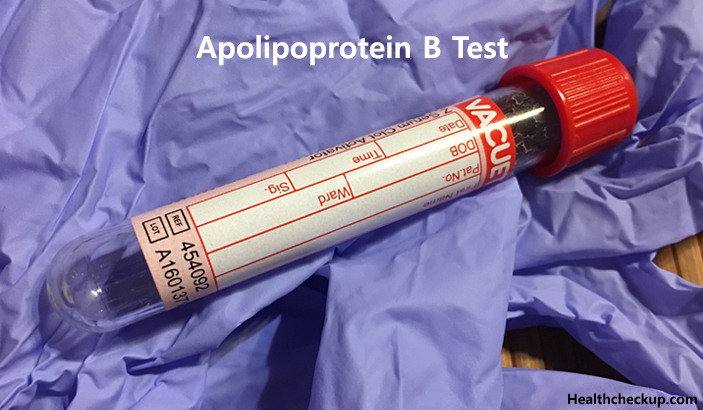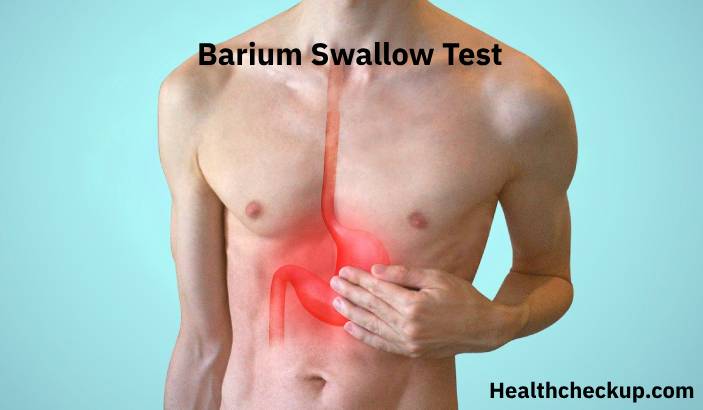Apolipoprotein B test(ApoB) is an essential test which is a constituent of various lipoproteins which are involved in cardiovascular disease and atherosclerosis.
The chronic inflammation in the arterial wall is known as atherosclerosis. It is triggered by a complex relationship between white blood cells (macrophages), lipoproteins, immune system and arterial wall normal elements.This method causes the atherosclerotic lesions or plaques formations which might project into the lumen of the artery leading to narrowing of arteries that mighteventually limit blood flow.If this happens in the coronary arteries, this might lead to angina pectoris and if it occurs in the arteries of the legs, it might lead to claudication.
Rupture of an atherosclerotic plaque may lead to thrombosis (blood clotting) causing an acute occlusion (blockage) of the artery. If this happens in a coronary artery it may cause an acute myocardial infarction (acute heart attack). Elevated cholesterol levels is one of the factors which contributes to atherosclerosis.
Cholesterol and Lipoproteins
Generally, cholesterol is a vital substance, but increased plasma levels seems to play a significant role in the origination and development of atherosclerosis. Normally atherosclerosis will not happen in the absence of highly increased levels of plasma cholesterol in animal models.
In humans, increased plasma cholesterol levels seems to be an main contributor to atherosclerosis, even though the threshold level of plasma cholesterol which must be surpassed to produce clinically relevant disease seems to be far lower than compared to the animal models, and this is because lesion formation happens over many decades.
Myocardial infarction which is classified under atherosclerotic clinical events are not common in the population who have lifelong very low levels of plasma cholesterol. Cholesterol cannot be transported in blood on its own, as fats are insoluble in water. Hence, the solution by the body to this issue is to bind few proteins and cholesterol which functions as transport vehicles which carries many types of fats like triglycerides, cholesterol and phospholipids. Lipoproteins are generally the combination of proteins and fats.
It is significant to highlight, that it is lipoprotein which act together with the arterial wall and initiate the force of events which causes atherosclerosis.Cholesterol is only one of many components of lipoproteins. As a result, amounts of total cholesterol gives less information about the lipoproteins which transports cholesterol bulk.
Low density lipoprotein cholesterol (LDL-C) and CVD risk both in men and women has a strong graded relationship and this has been argued by few of the investigators.
Amounts of the LDL-particles (LDL-P) number seems to be more analytical of risk than the quantities of the cholesterol bulk within these particles or LDL-cholesterol (LDL-C).
Even if LDL’s appear to be the most atherogenic particles, most important thing to be remembered is other apoB and VLDL comprising lipoproteins might also be a reason of contribution to atherosclerosis.
Apolipoprotein B Test (apoB)
Lipoproteins are the particles which transports triglycerides and cholesterol in the blood stream.Lipoproteins are encompassed of proteins like apolipoproteins and triglycerides, phospholipids, cholesterol. The lipoproteins differ in the major lipoprotein present, and the relative contents of the altered lipid components. ApoB is a significant component of varoius atherogenic lipoprotein particles.
ApoB happens in 2 main forms, that is apoB 48 and apoB 100. ApoB 48 is producedmostly by the small intestine. ApoB 100 is the apolipoproteinpresent in lipoproteins produced by the liver. Consequently, from atherosclerosis and cardiovascular risk viewpoint, apoB100 is the major one. ApoB 48 is chiefly found in chylomicrons.
ApoB 100 is present in chylomicrons, LDL, VLDL, and LP(a) particles. Basically these particles are atherogenic. All of these particles comprises a single apoB molecule. As a result, measurements of apoB signify the total burden of the main lipoprotein particles involved in the process of atherosclerosis.
Typically, 80-90% of apoBcharacterise LDL particles. Therefore, apoB replicates particle concentration, comparable to LDL-P. Although amounts of apoB are not extensively available, the assay has been consistent and does not need a fasting sample.
Manystudies have shown that apoB might be a better indicator of risk of cardiovascular disease compared to LDL-C. Moreover, it has been proved that apoB may be increased even though there are low or normal concentrations of LDL-C. ApoB also seems to indicate on-treatment risk, when LDL-C has been decreased by statin therapy.
Apo B comprising lipoproteins are the ones which are most probably to enter the arterial wall. They are proficient of transferring cholesterol into the artery wall, and if exists in more numbers then they may be the major originating factor in atherosclerosis. ApoB retention comprising lipoprotein particles inside the arterial wall is a vital part of the process.
Indications/Applications
Indisputable data support the thought that apoB is a better tool to measure cardiovascular disease than non-DHL-C and LDL-C.
Additionally, apoB seems to be a very important factor in measuring cardiovascular risk in the diabetes and metabolic syndrome setting, since patients with these conditions incline to have dense, small LDL particles with comparatively normal LDL-C nonetheless high levels of apoB.
In addition, many clinical trials have proven that apoB is animproved marker for checking patients on statin therapy for residual risk than LDL-C.
Normal Range for ApoB
The apoBnormal range is 40-125 mg/dL.Typically less than 100 mg/dL is considered necessary in low or intermediate risk individuals. Less than 80 mg/dL is needed in people with high risk like those with diabetes or cardiovascular disease.
Interpretation
Increased apolipoprotein B (apoB) levels predict an elevated risk of cardiovascular disease. ApoB levels might be increased during pregnancy or coffee consumption, and during the fall and winter seasons.
A very rare genetic disease called Bassen-Kornzweig syndrome (abetalipoproteinemia), might be indicated by low apoB levels as this is characterized by apolipoprotein B deficiency.
Additional Conditions which are Related with low apoB levels Include the Following:
- Malnutrition
- Liver cirrhosis
- Hyperthyroidism
How to Lower ApoB
Most of the doctors will suggest the same general methods to lower apoB as they do for reducing LDL-C. Hence, lowering the amount of cholesterol and saturated fats is often suggested together with increased consumption of fibers, vegetables, and mono-and polyunsaturated such as omega-3 fatty acids.
Few studies have showed that carbohydrate restriction may reduce apoB, free of whether the intake of saturated fat is high or low. LDL-C was not reduced by carbohydrate restriction in few studies, recommending that apoB and LDL-C are affected by diet differently.
In lowering the apoB, physical exercise has proven to work and it also positively affects the apoB/apoA1 ratio, nonetheless LDL-C effects seems to be much smaller.ApoB levels can be lowered by statins that is characterized under cholesterol lowering drugs.
Medically Reviewed By

I am an experienced Medical/Scientific writer with a passion for helping people live a happy healthy life. My thirst for writing has followed me throughout the years – it is there when I wake up, lingering at the edges of my consciousness during the day, and teases me at night as I go to sleep.








